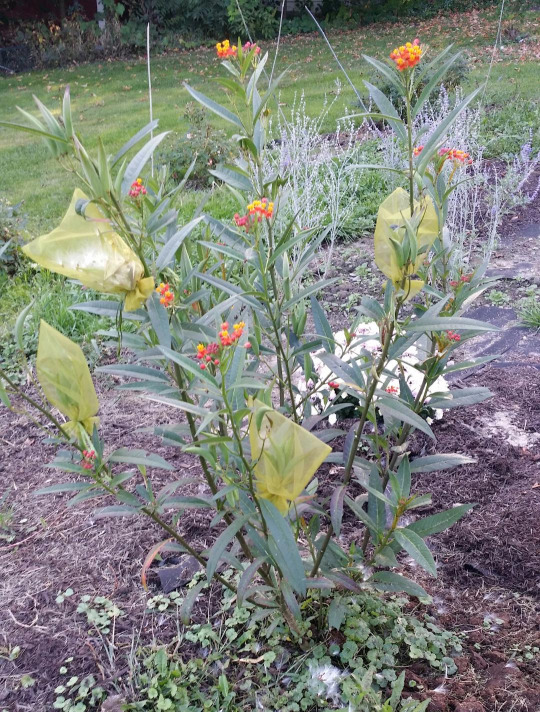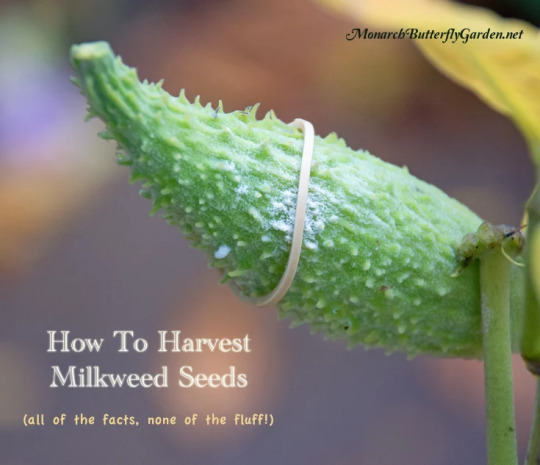#long story short: i identify what I'm wanting to collect seeds from and then google 'how the fuck do you do that'
Explore tagged Tumblr posts
Note
Hi Ani - I wonder do you have some resources or insights about collecting wildflower seeds? Particularly in bulk, and prepping them for distribution?
I ask because I've noticed that no-mow areas are becoming more common where I live, which is good, but since these are new projects what they amount to are areas of grass-but-taller. I have access to two properly wild abundance, and would like to propagate some of that in upcoming no-mow spaces.
Hello!
I would like to preface this by making it clear that I've never collected wildflower seeds in bulk. Honestly, the most wildflower seed collecting I usually do year by year is collecting milkweed seed when I find the pods in time, in my own backyard. Every so often I'll try and teach myself how to collect seeds from other plants (I'm pretty confident with sunflowers, tithonia rotundifolia, and zinnias, I've tried black eyed susans before but never germinated any to test the success), but for the most part I've got my One (1) specialty and am slowly learning just like you are!
With that in mind, I would like to give some encouraging news--at least in my experience, wildflowers are already producing seeds in pretty big numbers! Just one milkweed seed pod gives enough seed for at least two or three seed packets (unless your seed packs are extremely generous), so collecting from a handful of plants can give a pretty good amount! Of course, though, I don't know how big the no-mow spaces you're thinking of propagating in are...
When it comes to learning how to collect seeds from specific plants, I usually hit up Google or YouTube and find a tutorial there. A channel I often find myself on for this stuff is GrowIt BuildIt--he has a playlist dedicated to all of his seed-saving videos that you may find helpful!
The Xerces foundation also has a downloadable PDF on their site that speaks extensively about a variety of seed collecting and cleaning methods which may be helpful as well! They talk about machine-collecting as well as hand-collecting.
I will say, though, that a general good rule of thumb is to try not to take more than 20-30% of what's present, so that the wildflower population in that location can continue on. Wouldn't want to wipe out chances of wildflowers growing in one location in order to propagate them elsewhere! Not to mention the various animals that feed on seeds in the wild needing some seed around as a food source. Maybe collecting along the edges of the property, along paths where any seeds that fall would otherwise get trimmed or mowed? That way the seeds in the middle of it all are left as-is!
I can definitely say that one of the general things I've learned is that oftentimes, seeds are ready to collect from plants when they're looking pretty fucking dead. The backs of a sunflower head turning brown, zinnia petals turning brown and brittle, tithonias losing all their petals and becoming spiky brown seedheads--if it's brown, it's time to go to town, in a sense.
Seeing as milkweed is My Thing, I just feel I should point out that there are many ways to harvest milkweed seed. Some people will put organza bags over seed pods that are forming, so that when they split open the seeds don't escape and stay in the bag for later collection.

I have no doubt that this works--if anything, I think it'd be fantastic! I just don't feel like buying a lot of organza bags, so instead I usually just put rubber bands on the seed pods if they look like they're gonna split soon--this keeps it from splitting all the way open, so you can come back later and get your seeds! This is my favorite method for saving milkweed in my backyard--one or two seeds will escape, but for the most part, all the seeds are kept intact!

Regarding getting the seeds without the fluff, there's a few methods. The fluff on them (called comas) is designed to allow the milkweed to float in the air, similarly to dandelions--so it gets everywhere. I've seen methods to put the seeds in a bag or bucket with a few coins and shake it around to dislodge the seeds, but honestly the most life-changing revelation was seeing this video sometime in high school.
youtube
A common milkweed seedpod is used in this example, but I've found it still works perfectly with other milkweeds I've tried it on. Usually I leave the center support in the pod and just press my thumb on it while brushing the seeds off, then shake them out.
At this rate! I have gone on about milkweeds way too long. But I hope this was helpful to you and others! If anyone else seeing this has special advice to give, by all means, go ahead!
#outdoor gardening#gardening#seeds#seed saving#seed collecting#wildflower seeds#wildflowers#ani rambles#out of queue#answered asks#long story short: i identify what I'm wanting to collect seeds from and then google 'how the fuck do you do that'#and then a nice person on the internet from 10 years ago is like 'here's exactly how to do that' and i go 'cool'
33 notes
·
View notes